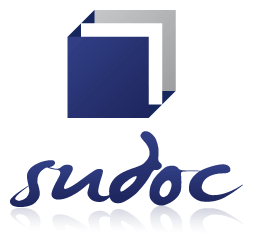Trasplante autólogo de precursores hematopoyéticos en pacientes mayores de 65 años, experiencia en un centro médico de Cali (Colombia).
Autologous transplantation of hematopoietic precursors in patients over 65 years, experience in a medical center in Cali (Colombia).
Contenido principal del artículo
El trasplante de células hematopoyéticas (TCH) tiene como objetivo proporcionar al receptor un sistema hematopoyético nuevo que funcione permanentemente, con el objetivo de curar enfermedades hematológicas benignas y neoplásicas, así como algunos tumores sólidos, en diferentes edades; sin embargo, se considera que en edad avanzada, mayores de 65 años, es una contraindicación relativa. Objetivo: describir las características clínicas y desenlaces de pacientes que recibieron trasplante de células hematopoyéticas mayores de 65 años en un centro de referencia en Cali. Materiales y métodos: estudio descriptivo retrospectivo basado en los registros médicos de toda la población con TCH autólogo durante el período 2010 a 2014. Se tuvieron en cuenta el sexo, la edad, las comorbilidades, el índice de Sorror, la recuperación hematológica y la mortalidad al día 100. Resultados: se trasplantaron 13 pacientes. El 54% (7) eran hombres. El 70% tenía diagnóstico de mieloma múltiple; el 30% (4), HTA. El 97% de los pacientes presentó un índice de Sorror bajo e intermedio, no hubo mortalidad al día 100, 2 pacientes fallecieron en recaída posteriormente. La mediana de seguimiento fue 21 meses. La complicación más común asociada a trasplante fue mucositis, seguida por neutropenia febril. Conclusiones: el trasplante de médula ósea en pacientes mayores de 65 años es una opción de tratamiento seguro, la edad no debe ser un obstáculo para su realización, pues se obtiene una buena tasa de respuesta con una mortalidad baja.
Descargas
Detalles del artículo
Hatzimichael E, Tuthill M. Hematopoietic stem cell transplantation. Stem Cells Cloning. 2010;3:105-17.
Majhail NS, Farnia SH, Carpenter PA, Champlin RE, Crawford S, Marks DI, et al. Indications for autologous and allogeneic hematopoietic cell transplantation: guidelines from the American Society for Blood and Marrow Transplantation. Biol Blood Marrow Transplant [internet]. 2015;21(11):1863-9. Disponible en: http://dx.doi.org/10.1016/j.bbmt.2015.07.032
Khaled SK, Thomas SH, Forman SJ. Allogeneic hematopoietic cell transplantation for acute lymphoblastic leukemia in adults. Curr Opin Oncol. 2012;24(2):182-90.
Sorror ML. How I assess comorbidities before hematopoietic cell transplantation. Blood. 2013;121(15):2854-63.
Sorror ML, Maris MB, Storb R, Baron F, Sandmaier BM, Maloney DG, et al. Hematopoietic cell transplantation (HCT)-specific comorbidity index: a new tool for risk assessment before allogeneic HCT. 2005;106(8):2912-9.
Mohty M, Harousseau JL. Treatment of autologous stem cell transplant-eligible multiple myeloma patients: ten questions and answers. Haematologica [internet]. 2014;99(3):408-16. Disponible en: http://www.haematologica.org/cgi/doi/10.3324/haematol.2013.096149
Auner HW, Garderet L, Kröger N. Autologous haematopoietic cell transplantation in elderly patients with multiple myeloma. Br J Haematol. 2015;171(4):453-62.
Brenner H, Gondos A, Pulte D. Recent major improvement in long-term survival of younger patients with multiple myeloma. Blood. 2008;111(5):2521-6.
Majhail NS, Farnia SH, Carpenter PA, Champlin RE, Crawford S, Marks DI, et al. Indications for autologous and allogeneic hematopoietic cell transplantation: guidelines from the American Society for Blood and Marrow Transplantation. Biol Blood Marrow Transplant [internet]. 2015;21(11):1863-9. Disponible en: https://www.ncbi.nlm.nih.gov/pmc/articles/PMC4830270/pdf/nihms-770692.pdf
Thanendrarajan S, Stein CK, Davies FE, Van Rhee F, Zangari M, Heuck C, et al. Defining the impact of tandem autologous stem cell transplantation in multiple myeloma: a casematch analysis in the total therapy trials. Blood [internet]. 2015;126(23):3182. Disponible en: http://www.bloodjournal.org/content/126/23/3182.abstract
Balsam L, Saad C, Arsene C, Fogel J. Impact of autologous stem cell transplantation on blood pressure and renal function in multiple myeloma patients. J Natl Med Assoc [internet]. 2017;109(3):182-91. Disponible en: http://dx.doi.org/10.1016/j.jnma.2017.02.010
Alyea E, Weller E, Schlossman R, Canning C, Mauch P, Ng A, et al. Outcome after autologous and allogeneic stem cell transplantation for patients with multiple myeloma: impact of graft-versus-myeloma effect. Bone Marrow Transplant [internet]. 2003;32(12):1145-51. Disponible en: http://www.nature.com/doifinder/10.1038/sj.bmt.1704289
Kumar L, Gogi R, Patel AK, Mookerjee A, Sahoo RK, Malik PS, et al. Multiple myeloma with extramedullary disease: impact of autologous stem cell transplantation on outcome. Bone Marrow Transplant [internet]. 2017;52(10):1473-5. Disponible en: http://dx.doi.org/10.1038/bmt.2017.165
McCarthy PL Jr, Hahn T, Hassebroek A, Bredeson C, Gajewski J, Hale G, et al. Trends in use of and survival after autologous hematopoietic cell transplantation in North America, 1995-2005: significant improvement in survival for lymphoma and myeloma during a period of increasing recipient age. Biol Blood Marrow Transplant. 2013;19(7):1116-23.
Elstrom R, Martin P, Ostrow K, Barrientos J, Chadburn A, Furman R, et al. Response to second-line therapy defines the potential for cure in patients with recurrent diffuse large B-cell lymphoma: implications for the development of novel therapeutic strategies. Clin Lymphoma Myeloma Leuk. 2010;10(3):192-6.
Jantunen E, Lemoli R. Preemptive use of plerixafor in difficult-to-mobilize patients: an emerging concept. Transfusion. 2012;52(4):906-14.

















